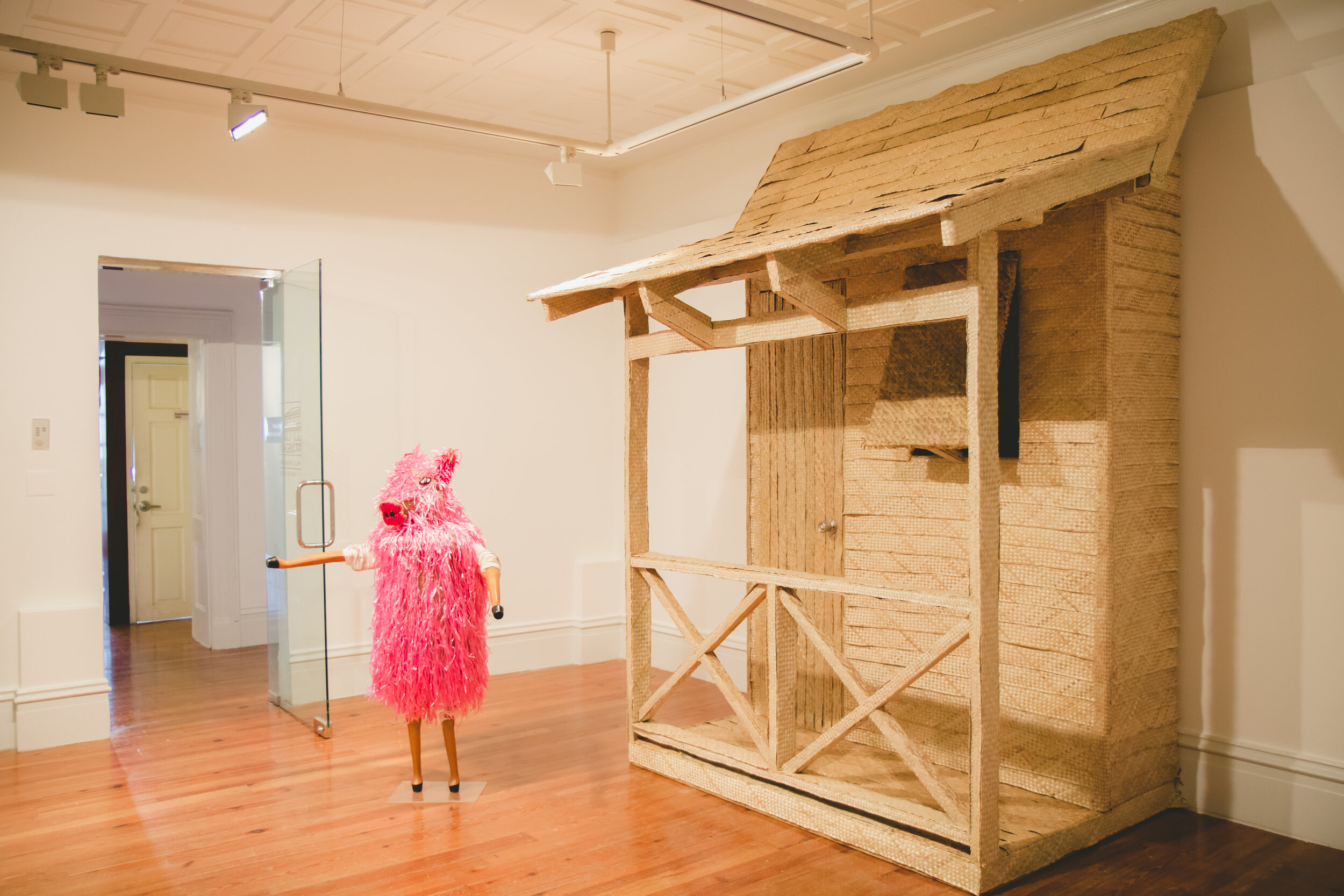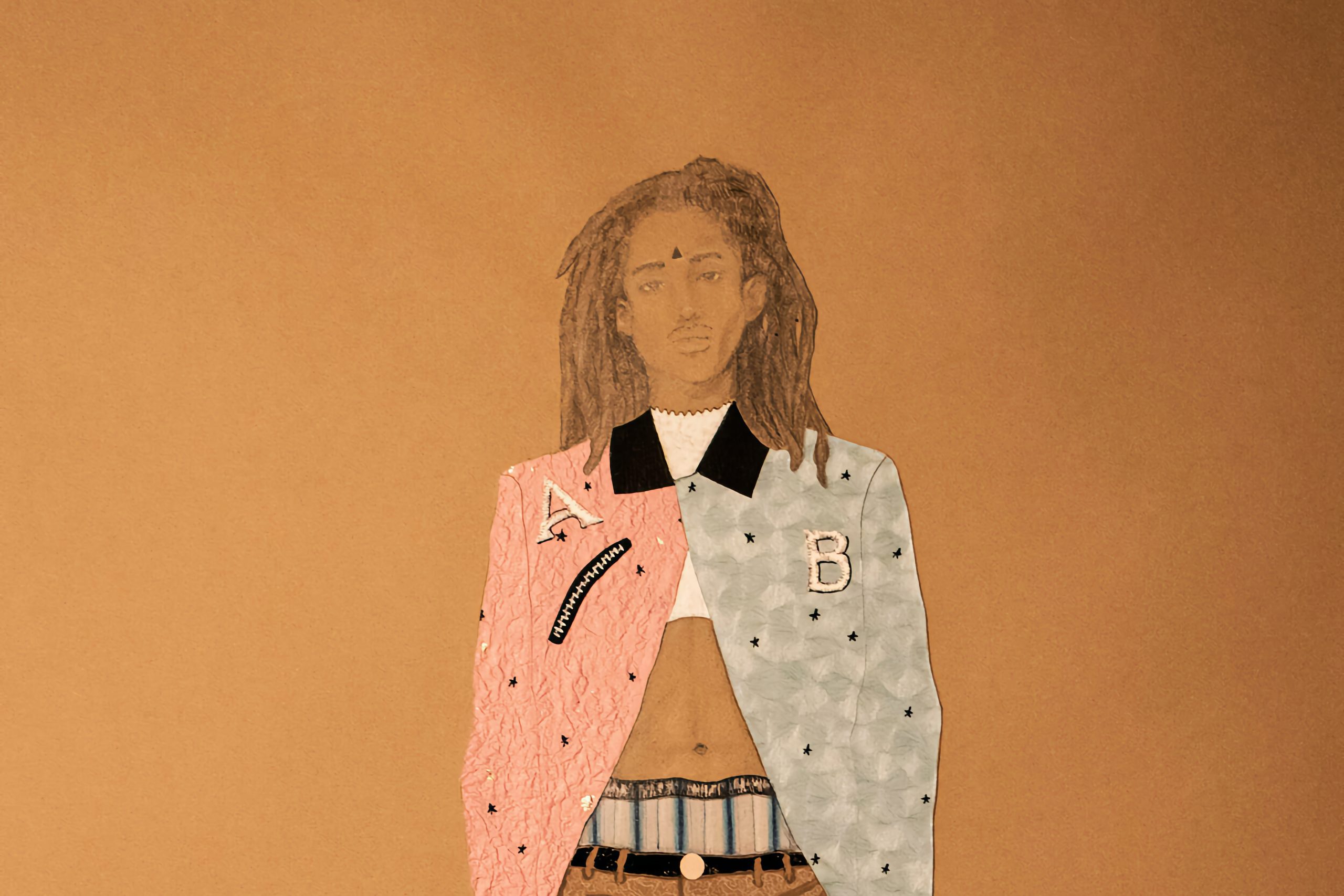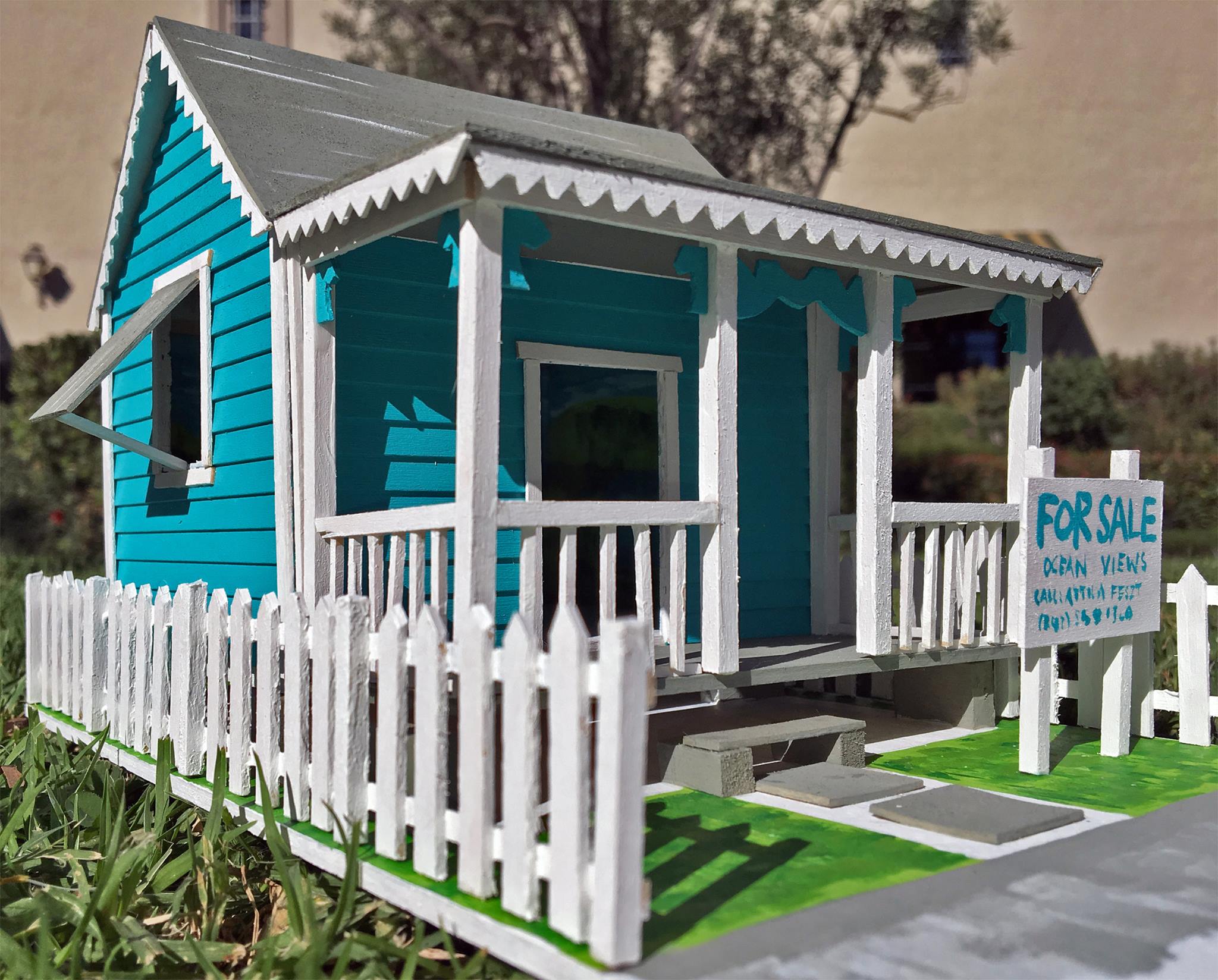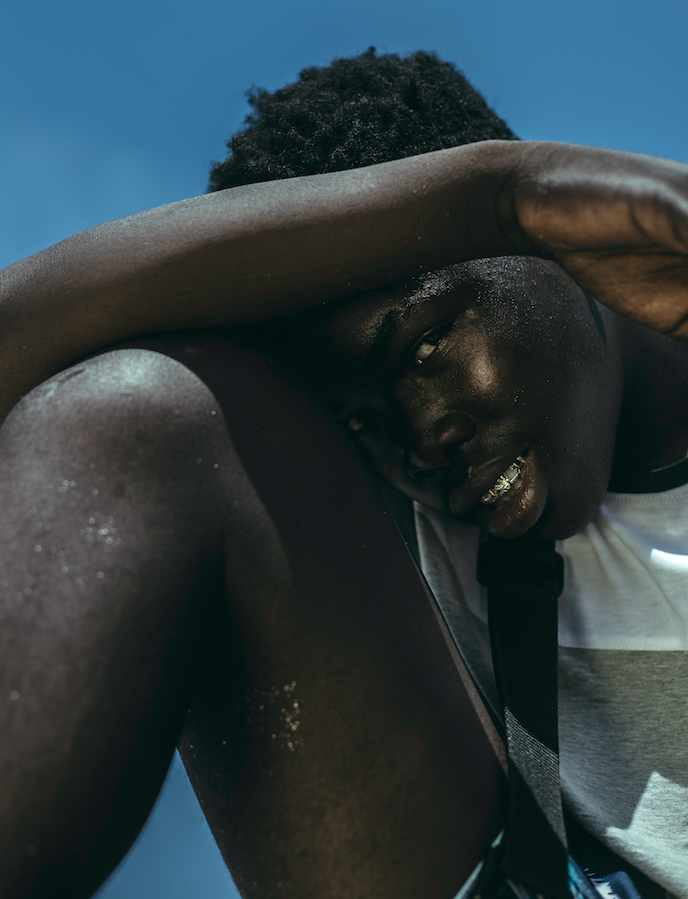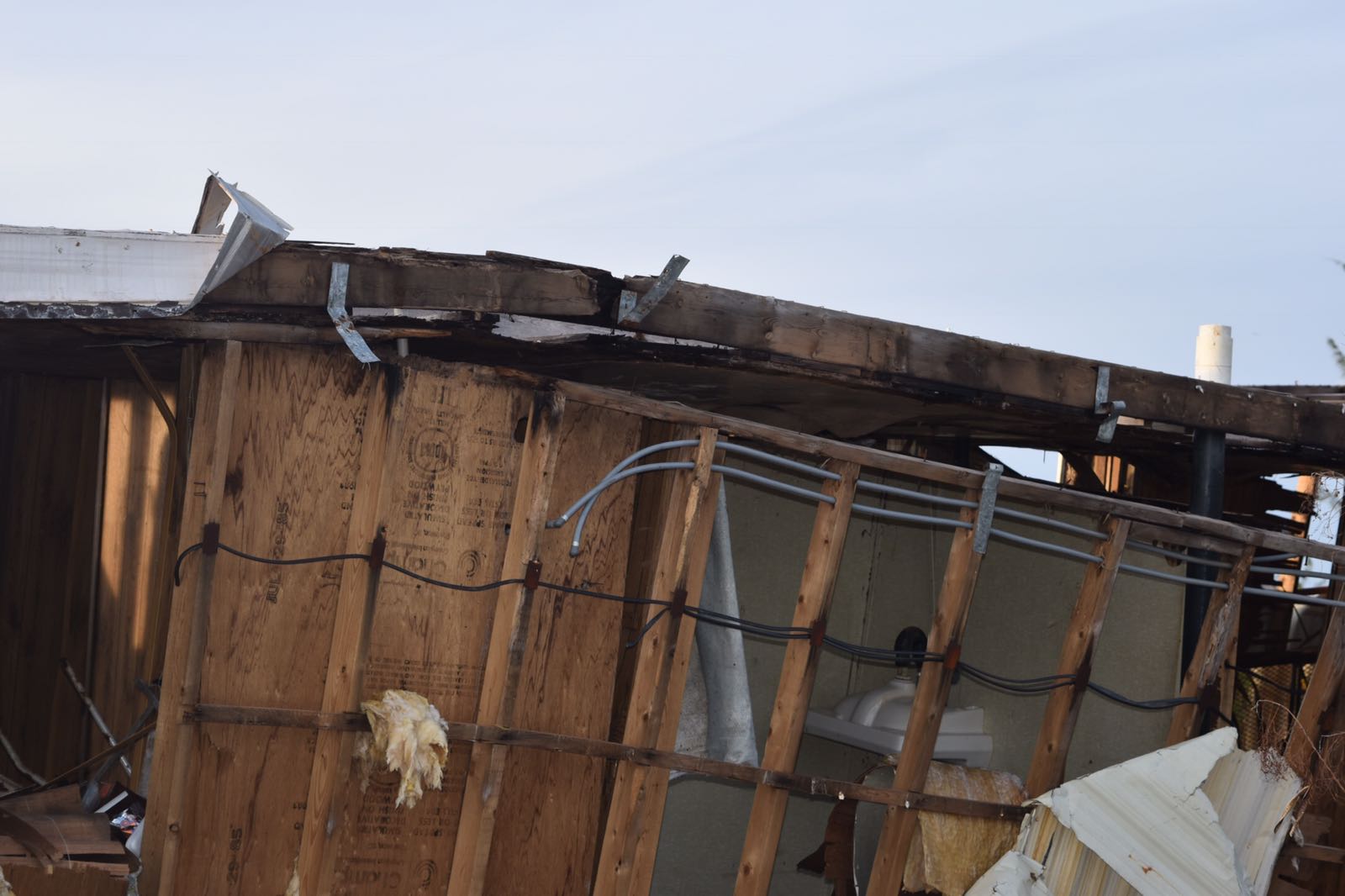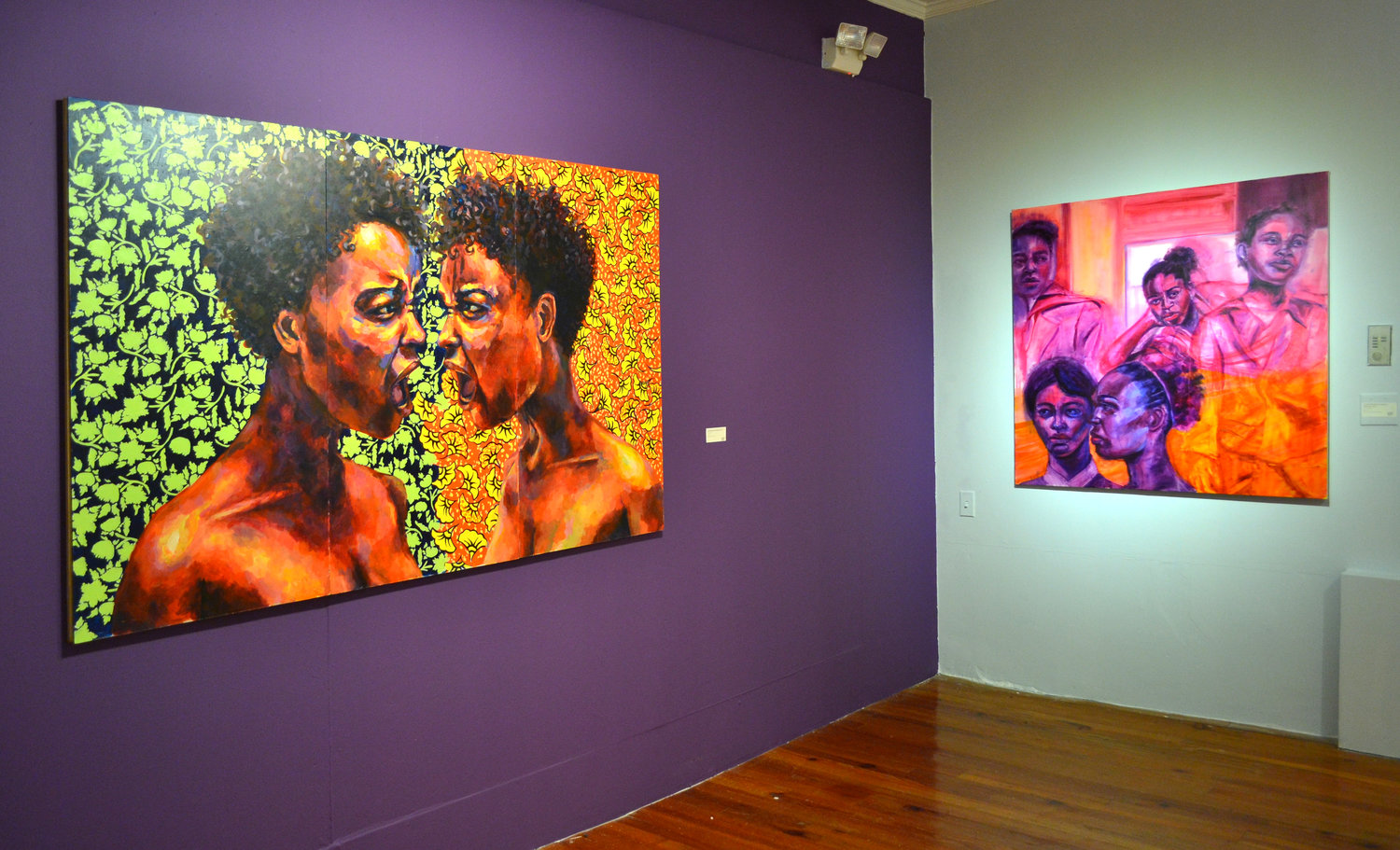Stories Justin Benjamin Explores Interiority in Vantage Amaani Hepburn · 15 April 2024 Justin Benjamin is a painter who primarily
All posts tagged: projects
The Straw Paradox
By Natalie Willis. Averia Wright’s “The Straw Paradox: The Pig That Built His House of Straw” is something of a paradox in the name itself. Straw work in The Bahamas is a bit of a misnomer – it isn’t really “straw” in the Western traditional sense at all. Our straw is not made of barley, wheat or things of that ilk at all, rather, it is a pale gold weaving made of Silver Top Palm. Wright comes from a family of straw market women, and has been plaiting her whole life.
Adaptability & Draughts(woman)ship: Kachelle Knowles Builds a Practice of Representation That Takes Action
By Natalie Willis. We are not used to seeing ourselves outside of the lens of tourism as Bahamians. This is troublesome for a newly-independent nation not yet 50 years old, and with 200 years of tourism weighing in above our heads. The decolonial work of imaging ourselves as Bahamians (particularly as Black Bahamians) is slow-going but gaining more visibility. The representation for many of our Black non-Bahamian people of this nation is in a more dire state. These observations and lines of questioning are brought to the forefront in Kachelle Knowles’ delicate and tenderly draughted portraits of the Black Bahamian man in her body of work for “Bahamian Man Since Time,” which recently closed in the NAGB’s Project Space. In the aftermath of Hurricane Dorian and its painful shifts and turns – and in the museum’s efforts to respond appropriately to hurricane efforts, we wanted to share some words on the exhibition as it became the site of a donation centre for Equality Bahamas and Lend-A-Hand Bahamas. These works were the backdrop to so many of your efforts to assist and to be supported.
Talking to the Dead: Tamika Galanis brings Lomax archive materials home
By Natalie Willis
“There are years that ask questions and years that answer.” ― Zora Neale Hurston, Their Eyes Were Watching God
“Homecoming: Talking to the Dead” by Tamika Galanis becomes an answer to a much older question. Galanis’ work, in her careful, tender sifting-through of the Alan Lomax archive (consisting of a host of images and sound from his expedition to The Bahamas in 1935) at the Library of Congress became a response to Lomax’s curious call and questioning nearly 100 years ago. A Library of Congress Fellow, Galanis may be best known to some as “the lady with the shirts” – those Lignum + Tingum tees that serve up Bahamian dialect and lists of local flora and food – but for others she is far, far more – an artist, researcher, documentarian, and a seeker of truth. Coming across materials from this collection while she was undertaking her graduate studies, Galanis saw a letter from Lomax reporting his findings from his time in Nassau back to the Library of Congress (LOC), the start of her time following this thread that would lead her to a surprising connection to Zora Neale Hurston.
The Long Eye of Culture: A Mash Up, a Hybrid
By Dr Ian Bethell-Bennett, The University of The Bahamas. Bahamian society and culture are already deeply creolised and vibrant, so why not make every effort, take every chance to show who we are? In the 1980s Barbadian calypsonian Gabby performed ‘Jack’, and people laughed. In the early 2000s Bahamian performer K. B. sang ‘Dey Sellin’, and people laughed. In fact people criticised him for exaggerating. ‘Dey sellin’… culture captures what we do not see. Oral and aural culture deliver serious critical visions and versions on what a go on, as the calypsos of the Trinidadian ‘Trinity’ Mighty Sparrow, Shadow and Chalkdust made critical often blistering interventions in all matters of national concern. Today, we hide from this kind of cultural richness or defame it. In “Apocolypso”–first published in 2004 and recirculated in 2013–Christian Campbell highlights the shifting tides and sands of Bahamian landscape and the accompanying cultural erosion and erasure.
Creative Youth: Reevaluating Our Values and the Work of Young People
By Dr Ian Bethell Bennett. The Bahamas has quickly become a country with multilayered and multifaceted youth conflicts. Over the last ten years, these issues have taken the fore and removed the focus from real and positive change. Violence, youth disengagement and youth disaffection can be addressed through creative expression and creative practice. However, in a school system that argues for a focus on the STEM and not STEAM, but without any real engagement–where art and performance are seen as outside and unwanted stepchildren–it is significant that some young Bahamians are excelling in their work and their creative expression.
Some (Re)assembly Required: Melissa Alcena’s takes a soft lens on Black masculinity
Melissa Alcena’s solo show currently on view in the Project Space through December 3rd, “Some (Re)assembly Required,” speaks to this puzzle-piecing together and rebuilding and reclaiming of the chunks of softness that has been chipped away from Black men for so long.
If an Entire Population Moves, Is It Still a Nation?: Post-Irma and Post-Colonial Devastation
By Dr Ian Bethell-Bennett. A few weeks ago, this question was asked in a column that focused on the death of legendary artist Sam Shepard. Today, I ask this question again in the wake of Hurricane Irma’s devastation to the map of Bahamianness and Caribbeanness. As a people who survived the reality and the legacy of slavery and resettlement, we do not take time to process our grief. We do not sit and ponder! We do not have time. Our lives are so often predetermined by external forces that are both visible and invisible to the eye that we are always moving. What has occurred over the last two weeks is mostly invisible, aside from the obvious and daunting structural and spatial devastation we see on the surface.
The Mark of a Woman: Portraits of black womanhood in the work of Gabrielle Banks.
By Natalie Willis. Reclining nudes, women posed ‘just so,’ we’re all quite accustomed to this kind of figuration and portraiture in the art world. Even those of us who are just dipping our toes into the wonders of the art world associate art with this kind of imagery. Art students at universities the world over can be found squinting in deepest concentration, poring over their depictions of a nude model before them – often a woman – and trying to figure out form, perspective, how to capture the ‘essence’ of this stranger they’ve met. It’s part of the canon, in many ways.
Creating Thinking Spaces: Opportunity to Think, Build, and Grow
The University of The Bahamas and the National Art Gallery of The Bahamas have created an open space for group discussion that allows students to benefit from the offering of both spaces. This relationship allows culture to truly be highlighted. As much as we talk about culture, we often disconnect our experiences from talk. These lectures are designed to promote thought and unshackle minds blinkered by a dysfunctional system designed to create workers without a sense of self, or an identity that can transcend the 9 to 5 and the 21 by seven of the mundane.

